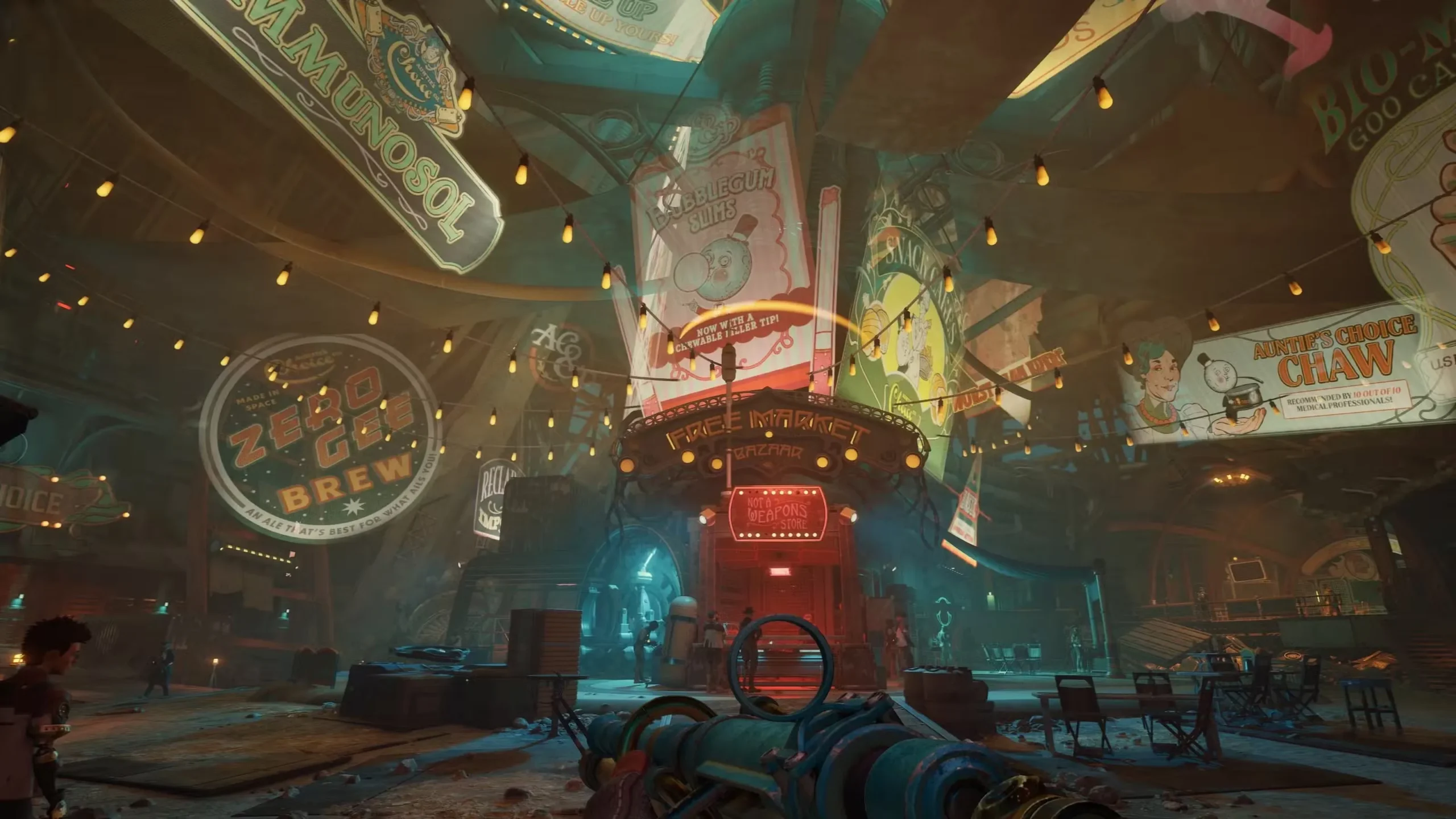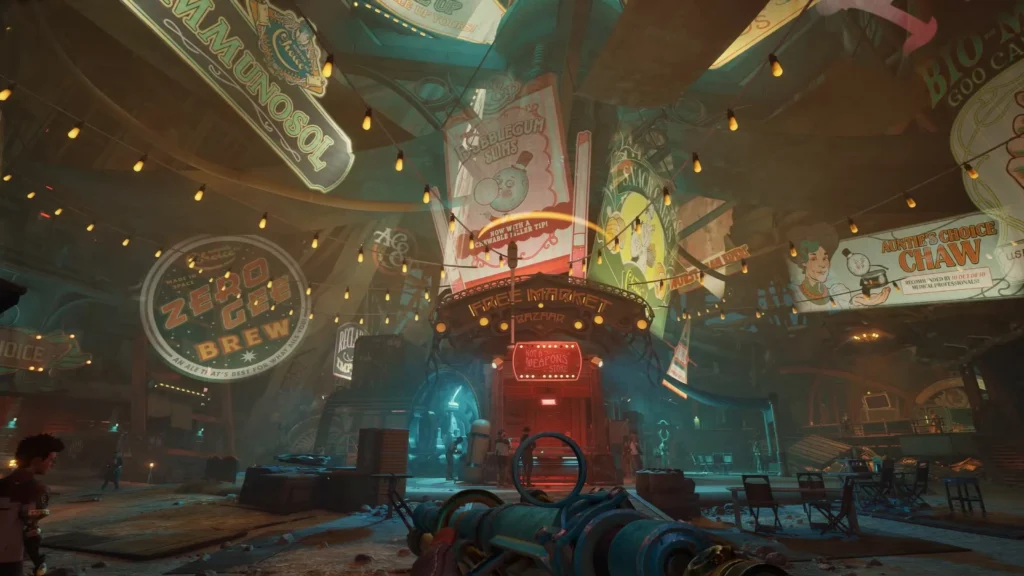
S'abonner à la newsletter
Entrez votre adresse email ci-dessous et abonnez-vous à notre newsletter

Entrez votre adresse email ci-dessous et abonnez-vous à notre newsletter
Votre source d'actualités et de guides sur les jeux

Complete breakdown of Performance, Balanced, and Quality visual modes in The Outer Worlds 2 for PS5, PS5 Pro, Xbox Series X/S. Find the best settings for your console and playstyle.
Modern console gaming comes with a choice that would’ve seemed impossible a generation ago: do you want your game to look amazing, or do you want it to run buttery smooth? Rarely can you have both maxed out simultaneously, and The Outer Worlds 2 is no exception to this hardware reality.
Obsidian has included a Visual Mode setting that lets you prioritize what matters most to your experience. But unlike some games that just slap generic labels on their graphics options and call it a day, the performance differences between modes in The Outer Worlds 2 are significant—and understanding what you’re actually getting on your specific console matters.
This guide breaks down exactly what each visual mode delivers on PS5, PS5 Pro, Xbox Series X, and Xbox Series S, including the framerates, resolutions, and trade-offs. Whether you’re a framerate purist, a pixel counter, or just want the best overall experience, I’ll help you make the right choice for your setup and preferences.
Before we dive into the technical specs, make sure you’re set up with our guide du débutant et what to do first guide to maximize your experience once you’ve got your visual settings dialed in.
Let’s start with the basics before we get into console-specific breakdowns.
Philosophie: Smooth gameplay over visual fidelity
Ce que vous obtenez :
Idéal pour : Fast-paced combat, players sensitive to framerate drops, competitive mindsets, anyone who prioritizes gameplay feel over screenshot quality
Philosophie: Maximum graphical fidelity over smoothness
Ce que vous obtenez :
Idéal pour : Screenshot enthusiasts, players who don’t mind 30 FPS, exploration-focused gameplay, anyone playing on a large 4K TV where the resolution difference is noticeable

Philosophie: Find the sweet spot between visuals and performance
Ce que vous obtenez :
Idéal pour : Players who want both decent visuals AND acceptable smoothness, anyone with a 120Hz TV/monitor, the recommended option for most people
Here’s where things get interesting—not all consoles offer the same options, and the performance targets vary significantly.
The Series X is the most powerful Xbox console and gets the complete visual mode suite.
My Series X recommendation: Balanced mode if you have a 120Hz TV, Performance mode if you don’t (or if you prioritize responsiveness for combat). Quality mode is fine for slow exploration but hurts during intense faction conflicts and combat scenarios.
The Series S is less powerful and shows it in the available options.
My Series S recommendation: Balanced mode, no question. The 40 FPS makes a huge difference in how the game feels, and the resolution difference between Balanced and Quality isn’t dramatic enough to justify dropping to 30 FPS. Plus, you’ll want that extra smoothness when you’re hunting for Mag-Picks and hacking terminals.

The PS5 Pro is the most powerful console in the lineup and it shows.
My PS5 Pro recommendation: Performance mode is the star here. The 1620p native resolution at 60 FPS is the best overall experience in the game across any console. You get great visuals AND smooth gameplay—exactly what you paid the premium for. Only switch to Balanced if you’re doing a slow, exploratory playthrough where you want that native 4K for screenshots.
Here’s where things get weird.
The elephant in the room: It’s genuinely bizarre that base PS5 doesn’t support Performance mode when Xbox Series X does. The base PS5 is absolutely capable of running this game at 60 FPS with reduced resolution—The Outer Worlds 2 isn’t exactly pushing the boundaries of photorealism. This feels like either an optimization issue or a deliberate choice to make the PS5 Pro’s Performance mode more appealing by comparison.
My base PS5 recommendation: Balanced mode is your only real choice for decent smoothness. Quality mode at 30 FPS is functional but feels sluggish, especially during combat. Hopefully Obsidian patches in Performance mode support later, because base PS5 owners are getting a raw deal here.
If you’re playing on PC, you can completely ignore this console discussion because you have granular control over every visual setting imaginable.
PC advantages: ✅ Adjust resolution, framerate cap, individual graphics settings ✅ Support for ultrawide monitors and higher refresh rates ✅ DLSS/FSR upscaling options for AMD and NVIDIA cards ✅ Mod support (eventually) for further visual enhancements ✅ No forced compromises between quality and performance
PC disadvantages: ❌ Requires tweaking and optimization knowledge ❌ Performance varies wildly based on hardware ❌ Potential for bugs and optimization issues (especially at launch)
If you have a decent gaming PC, that’s arguably the best platform for The Outer Worlds 2, but console is perfectly viable if you choose the right visual mode.
Let’s get practical with specific recommendations based on different player priorities and hardware.
Best choice: Performance mode (where available)
Pourquoi: 60 FPS makes combat more responsive, aiming more precise, and the overall experience more fluid. The resolution reduction is noticeable but not gamebreaking.
Idéal pour :
Console-specific:
Consultez notre best starting builds guide for combat-focused characters that benefit most from high framerate.
Best choice: Quality mode
Pourquoi: Maximum resolution and visual effects make the game look its best, especially on large 4K displays. Perfect for slow, exploratory gameplay where framerate matters less.
Idéal pour :
Console-specific:
If you’re the type to thoroughly explore every area and hunt down every faction quest, Quality mode makes sense.
Best choice: Balanced mode
Pourquoi: The 40 FPS sweet spot feels significantly smoother than 30 FPS while retaining most of Quality mode’s visual benefits. This is the Goldilocks option.
Idéal pour :
Console-specific:
The 120Hz requirement: Balanced mode works best on 120Hz displays because 40 FPS divides evenly into 120Hz (3:1 ratio), creating smooth frame pacing. On 60Hz displays, 40 FPS can feel slightly uneven due to imperfect frame timing. If you have a 60Hz display and your console supports Performance mode, that might actually feel smoother than Balanced despite the resolution downgrade.
After extensive playtime across different modes and consoles, here’s my honest assessment:
Let’s be real: The Outer Worlds 2 is a good-looking game, but it’s not winning awards for photorealism or pushing the boundaries of what current-gen consoles can do. The art style is stylized, the environments are colorful and interesting, but you’re not getting The Last of Us Part II levels of visual fidelity here.
Ce que cela signifie : The visual difference between Performance and Quality modes is less dramatic than in more graphically demanding games. You’re not losing some breathtaking vista or mind-blowing lighting effect by dropping to Performance mode—you’re getting slightly softer textures and less precise shadows. That’s it.
The practical impact: You can easily play in Performance mode without feeling like you’re missing out on the visual experience Obsidian intended. The game looks and runs great at 60 FPS.
Gaming has moved on. While 30 FPS is technically “playable” and was the standard for decades, it feels noticeably choppier and less responsive in 2025, especially if you’ve been playing modern games at 60+ FPS.
In The Outer Worlds 2 specifically:
This is particularly noticeable during intense combat situations when you’re dealing with multiple enemies and need to react quickly. Check our perks guide for builds that rely on precision and timing—they all benefit from higher framerates.
Exception: If you’re doing a slow, dialogue-heavy, exploration-focused playthrough with minimal combat, 30 FPS is perfectly acceptable. But for action-oriented builds, it’s a handicap.
The Balanced mode’s 40 FPS target is genuinely impressive. It’s not as smooth as 60 FPS, but it’s dramatically better than 30 FPS while retaining significantly better visuals than Performance mode.
Why 40 FPS works:
On PS5 Pro specifically, Balanced mode at native 4K and 40 FPS is borderline magical. You get gorgeous visuals with acceptable smoothness—it’s hard to ask for more.
PS5 Pro : You paid premium price, play in Performance mode and enjoy that 1620p/60 FPS goodness. You earned it.
Xbox Series X: Performance or Balanced depending on whether you prioritize smoothness or visuals. Both are great options.
Base PS5: You’re unfortunately stuck with Balanced or Quality, and Balanced is objectively better for 99% of players. Hopefully this gets patched.
Xbox Series S: Balanced mode is your only viable choice. Quality mode exists but isn’t worth the framerate sacrifice given the relatively small resolution bump.
Le problème: Balanced mode’s 40 FPS doesn’t divide evenly into 60Hz, potentially causing uneven frame pacing.
La solution:
The advantage: Balanced mode’s 40 FPS divides perfectly into 120Hz (3:1 ratio), creating perfectly smooth frame pacing.
The recommendation: Balanced mode is IDEAL on 120Hz displays. Take advantage of your premium display and enjoy the best of both worlds.
The consideration: Stealth gameplay is slower and more methodical, meaning framerate is less critical than visual clarity for spotting enemies and navigating environments.
The recommendation: Quality or Balanced mode work great for stealth. Performance mode is overkill unless you’re doing aggressive stealth with lots of combat.
Consultez notre backgrounds guide for stealth-oriented character setups that benefit from visual clarity.
The consideration: You’ll spend dozens of hours in this game hunting down every lockbox, faction quest, and secret area. Eyestrain and fatigue become real concerns.
The recommendation: Performance or Balanced mode for long sessions. The smoothness reduces eye fatigue over extended play periods.
Don’t forget to stock up on Mag-Picks and Bypass Shunts before those marathon exploration sessions.
Yes, absolutely. Visual mode is a settings option you can change anytime from the pause menu. There’s no penalty for switching, no progress lost, no consequences.
Ma recommandation : Try all available modes on your console for 15-30 minutes each. What looks good in a screenshot might feel terrible in actual gameplay, and vice versa.
Testing methodology:
Personal preference genuinely matters here. Some people can’t tell the difference between 40 and 60 FPS; others are incredibly sensitive to it. Trust your own experience.
I need to address this directly because it’s genuinely frustrating: the lack of Performance mode on base PS5 makes no technical sense.
The evidence:
Possible explanations:
What should happen: Obsidian should patch in Performance mode support for base PS5. The hardware is capable, and base PS5 owners deserve the option.
What will probably happen: Nothing, unfortunately. But here’s hoping.
| Console | Best Mode | Alternative | Éviter |
|---|---|---|---|
| PS5 Pro | Performance (1620p / 60 fps) | Balanced (4K / 40 fps) | Quality (unnecessary vs Balanced) |
| Base PS5 | Balanced (4K / 40 fps) | Quality (if you hate 40 fps) | N/A (no Performance mode) |
| Xbox Series X | Balanced (1440p / 40 fps) | Performance (60 fps priority) | Quality (30 fps too limiting) |
| Xbox Series S | Balanced (900p / 40 fps) | Quality (if desperate) | N/A (no Performance mode) |
| PC | Custom (target 60+ fps) | N/A | N/A |
For transparency, here’s what I personally use on each console I tested:
PS5 Pro : Performance mode, 100%. The 1620p/60 FPS combo is perfect and exactly what I want from a premium console.
Base PS5: Balanced mode by necessity. I wish I had Performance mode, but 40 FPS is acceptable.
Xbox Series X: Balanced mode. The 1440p upscaled to 4K at 40 FPS hits the sweet spot for me.
Série S : Balanced mode (the only reasonable choice).
Your choice might differ, and that’s fine. The beauty of having options is that you can customize the experience to your preferences and hardware.
Some players pick one mode at the start and never experiment. Try them all—you might be surprised by your preferences.
“Quality” sounds better than “Performance” psychologically, but it’s not automatically the best choice. Judge by actual experience.
If you have a 120Hz display, Balanced mode works better. If you have 60Hz and Performance mode is available, use that instead.
A game that looks 10% better but feels 40% worse to play isn’t a good trade-off.
The Outer Worlds 2 looks great even in Performance mode. Don’t sacrifice smoothness for minor visual improvements.
Hopefully Obsidian continues optimizing The Outer Worlds 2 post-launch. Potential improvements:
Wish list:
Keep an eye on patch notes—performance improvements often come in post-launch updates.
After testing all modes across multiple consoles, my universal recommendation is simple: prioritize framerate over resolution in The Outer Worlds 2.
The game isn’t visually stunning enough to justify sacrificing smoothness for pixels. The responsive controls, fluid combat, and overall gameplay feel at higher framerates dramatically improve the experience more than slightly sharper textures ever could.
Use Performance mode if available. Use Balanced mode if it’s not. Only use Quality mode if you’re doing a slow, screenshot-heavy playthrough or genuinely can’t stand anything below native 4K.
Now get out there, pick your visual mode, and start exploring Arcadia’s factions with the smoothness you deserve.
Related guides for optimizing your experience: